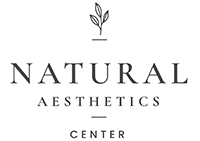regenerative medicine
Regenerative Medicine
Regenerative medicine in aesthetics is rapidly advancing, and polynucleotides and exosomes are emerging as powerful tools within this field. These cutting-edge products offer innovative ways to stimulate tissue regeneration, improve skin health, and combat aging.
POLYNUCLEOTIDES
Polynucleotides are derived from purified salmon or trout sperm DNA. These polynucleotides are utilized for their regenerative properties and their ability to stimulate skin rejuvenation, collagen production, and cellular repair.
The DNA extracted from the sperm of salmon and trout contains highly concentrated polynucleotides that are rich in biological activity. These polynucleotides are used in aesthetic medicine for:
- Skin Rejuvenation: Polynucleotides derived from salmon or trout sperm can promote skin regeneration, improve texture, and reduce the appearance of fine lines and wrinkles.
- Anti-Aging Treatments: These polynucleotides stimulate the skin’s natural repair mechanisms, encouraging the production of collagen and elastin, which are key components in maintaining youthful-looking skin.
- Wound Healing: Polynucleotides are also used to accelerate wound healing after procedures like microneedling, laser treatments, or other minimally invasive aesthetic procedures.
EXOSOMES
Exosomes are microscopic vesicles secreted by cells that play a key role in intercellular communication. When used in Regenerative or Aesthetic Medicine, exosomes are often used for their regenerative and anti-aging properties, as they contain growth factors, proteins, and RNA that can potentially aid in skin rejuvenation, reduce inflammation, and promote healing.
As for the sources of exosomes in aesthetics, they can be derived from a variety of biological materials, including:
- Human Umbilical Cord: Human-derived exosomes, particularly those from umbilical cord tissue, are commonly used in aesthetics because they are rich in growth factors and cytokines that are beneficial for skin regeneration and wound healing. These exosomes are considered to be highly potent due to the regenerative nature of stem cells found in the umbilical cord.
- Plants: Plant-based exosomes are a newer area of exploration in the field of aesthetics. They are derived from plants like grapes, berries, and other botanicals. While plant-derived exosomes are less common, they are still believed to have antioxidant and anti-inflammatory properties beneficial for skin health and protection.
- Animals: Animal-derived exosomes, often from sources like cows, pigs, or other mammals, are used less frequently in aesthetics. However, exosomes from these sources can still contain bioactive molecules that are thought to support tissue repair and promote skin health. These exosomes are often used in research, though their application in human aesthetics is less widespread compared to human-derived exosomes.
The popularity of exosomes in aesthetic treatments stems from their potential to repair and rejuvenate skin, improve texture, and combat the signs of aging. However, it’s important to note that the source and quality of exosomes play a significant role in their efficacy and safety in aesthetic procedures.
Contact NACMD in Westlake Village for Industry-Leading Beauty-Enhancing Procedures
A board-certified physician with over 16 years of experience, Dr. Farrell understands the importance of delivering high-quality and effective cosmetic procedures. That’s why we provide many non- and minimally invasive beauty services to address your specific aesthetic concerns. Call us at 805-870-4487.

Reshape Your Confidence
Get in touch with us today to request an appointment or to speak to our staff.

